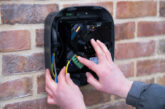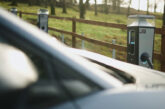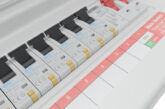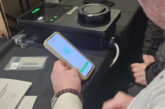
With a continued growth in the adoption of the latest IP CCTV systems and cameras, Matt Parton, Product Development Manager at ESP, looks at some of the considerations to be taken into account when choosing the most appropriate CCTV camera.
Estimates predict that there could be up to approximately six million CCTV cameras in the UK, but due to the sheer variety of the types of CCTV cameras and surveillance equipment, it can be very hard to pin down the exact number of devices.
Specifying the right camera is one part of the whole design scheme process that will explore all the requirements for the particular project in mind. There are various questions that need to be answered to ascertain the most appropriate CCTV system and cameras to be specified.
Will the security cameras be indoors or outside?
While most cameras are suitable for both inside and out, it’s important to consider features such as mounting and housing.
Camera housing options include ‘Bullet’ camera, which is an elongated camera on an adjustable bracket, or ‘Dome’ camera which is named for its dome-shaped housing and is more compact in comparison with the Bullet style.
For cameras to be mounted externally, check that sufficient ingress protection against water and dust is stated. This is usually indicated by the abbreviation ‘IP’, followed by the rating.
As a general guide, cameras with the rating IP65 or above are more than suitable for outdoor use. In addition, if extremes of temperature are expected, it is advisable to check the camera’s operational temperature on the specification sheet.
Do the cameras need to be discreet or act as a visual deterrent?
The location of the cameras and what needs to be monitored will help determine whether obvious or discreet cameras are required.
Larger cameras can act as an obvious reminder to people that they’re being monitored. Smaller dome cameras are the best choice for discretion. In addition, ‘Vandal’ resistant type cameras are developed to withstand higher impact in instances where a camera may be exposed to vandalism.
Camera housings are also available in white or black, and this option can again be taken to either make the camera discreet or more visible or it can simply be a preferred choice on the grounds of aesthetic appeal.
How large is the area to be monitored?
The best type of cameras will depend on the size of the area to be covered and where the camera will be mounted.
The lens specification of a camera dictates the field of view that can be achieved and is dependent on the mounting location of the camera and the distance to the target area. The lower the range of the camera lens, the wider the field of view will be, and the larger the lens, the narrower the field of view.
For example, if a general field of view is required to cover a car park then a wide lens will be suitable, whereas to capture the entrance to the car park from a distance a narrow lens would be preferential, as the target area is reduced. Cameras featuring a varifocal lens will enable the field of view to be set like a pair of binoculars.
There are various CCTV lens calculators available online that will assist in choosing the correct specification. The calculator will require the distance to the target area and the width that is to be captured. If multiple views are required from a single point, a controllable PTZ (pan, tilt, zoom) camera works best for flexibility.
Is audio integration required?
Combining audio into a CCTV system makes it possible for security to hear and speak with possible perpetrators. It can also be used as an independent detection method, triggering recordings and alarms when audio passes a certain threshold.
How clear does the video quality need to be?
The detail to be covered will determine the resolution required. For example, if monitoring potential shoplifting, having a high-quality image will be vital for identification purposes in the event of prosecution.
The camera’s resolution indicates how many megapixels the camera captures in the image. The higher the megapixel number, combined with a suitable camera location, the more detail and clarity the camera can capture. The more detail required by the client, the higher the megapixel count of the camera should be.
The minimal resolution is generally accepted at 2 megapixel, with 5 and 8 megapixel becoming more commonplace.
How will the light levels affect the CCTV recording?
It’s important to place cameras effectively according to lighting conditions, especially with external cameras.
Varying amounts of sunlight and limited daylight during the darker months may determine where the cameras are positioned. Other factors to consider include background glare from security lighting, sun or light reflection from windows facing the site.
For viewing at night time when there is no supplementary light, a camera, just like human vision, cannot see anything. The majority of cameras, therefore, are now equipped with either Infrared LEDs, which will produce a mono image at night time up to a certain distance, or White LEDs which will produce a colour image up to a certain distance.
If the cameras can be assisted further with security lighting this will improve the images captured during the night time.
Understanding the requirements
As we’ve demonstrated here, there are a number of factors to consider when specifying a CCTV system and cameras, but most important is the need to fully understand the client’s requirements and expectations.
Then, by providing them with the full picture as far as requirements, features and options are concerned, the installer is in a good position to potentially upsell to a higher specification system.
Browse or download the latest ESP product catalogue here
Read more industry feature articles here









